MANUFACTURING
The manufacturing industry has a large number of industrial applications whereby new products are created, or where a fresh approach to an existing product is required. Applications whereby insulation above all plays a very important role, but for which it is equally important to prevent condensation, improve structural strength, remove vibrations etc. Fomicom polyurethane foams are suitable for a number of different applications within the manufacturing industrial niche markets.
Spray or inject
Advantages
- decrease in energy costs
- waterproof insulation
- sustainable HFO sprayfoam
- high insulation value (0,022 W/mK)
- fast and easy system
- no machine needed
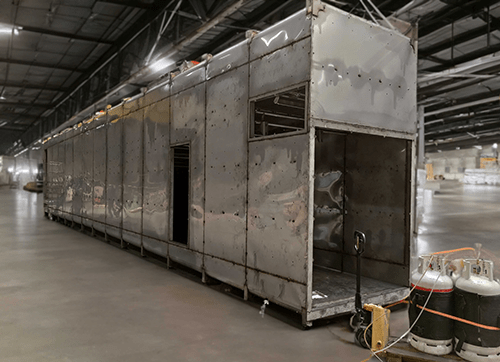
tunnel freezers

silo insulation
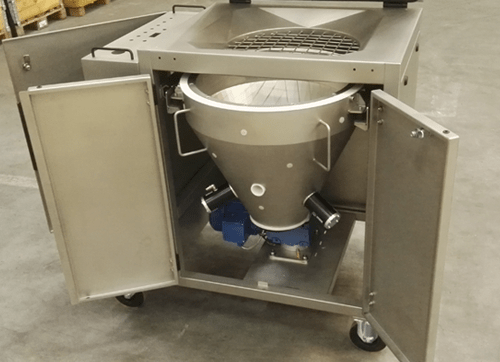
pellet hopper
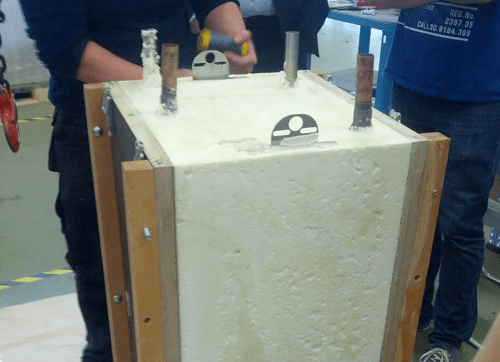
hvac objects
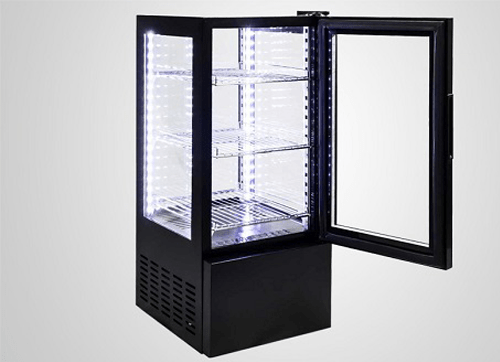
cooling display
BENEFITS OF CHOOSING SPRAYFOAM
Why choose this foam for your insulation needs?
1. Strengths of sprayfoam
Polyurethane (PU) foam is widely used for insulating freezing tunnels due to several significant advantages over other insulating materials like fiberglass or mineral wool. Here’s why it’s a preferred choice in this field :
- Excellent thermal conductivity (λ): Polyurethane foam has one of the lowest thermal conductivities available on the insulation market, meaning it effectively reduces heat transfer. This helps maintain very low temperatures inside the tunnel while minimizing cold losses.
- Reduced thickness: Due to its high insulating performance, polyurethane foam provides excellent insulation with less thickness compared to other materials. This is particularly advantageous in environments where space is limited.
- Air tightness: Polyurethane foam forms an airtight barrier, which not only prevents cold losses but also moisture infiltration. This reduces the risk of condensation and frost formation, which could compromise the tunnel’s efficiency.
- Durability: Polyurethane is highly resistant to extreme conditions, including very low temperatures and thermal variations. It doesn’t degrade easily, making it ideal for freezing environments where long-term reliability is crucial.
- Mechanical strength: Polyurethane foam has good mechanical resistance, allowing it to retain its insulating properties even under significant physical or thermal stress, without deforming
or losing efficiency.

Why insulation is crucial in the manufacturing industry
In the manufacturing industry, insulation plays an important role in optimising processes and reducing energy costs. Whether insulating machinery, storage tanks, silos, or even transport equipment, good thermal insulation improves energy efficiency and prevents heat loss. Our innovative spray foam insulation kits offer a versatile solution that insulates thermally, keeps moisture out, and provides durable protection against corrosion and condensation.

2. Comparison with other insulation materials
Insulation materials should be compared based on specific characteristics such as Lambda value, closed or open cell, airtightness, watertightness, compression strength,…
- Fiberglass or mineral wool: These materials have higher thermal conductivity than polyurethane, making them less effective in applications requiring very low temperatures. Additionally, they are thicker, thus requiring more space, and are more prone to settling or deteriorating over time.
- Expanded polystyrene (EPS): Although also used in some insulation applications, EPS has higher thermal conductivity and performs less well in extremely cold environments. It is also more fragile and more prone to cracking under mechanical stress.
3. Foam machine in one kit
The Froth-Pak system is used by companies in the manufacturing industry to insulate objects, machines, constructions,…. This cylinder-based system requires no investment in a foam machine. Pipes connected to the 2 pressurised cylinders are connected to a convenient and easily reusable gun. The Froth-Pak system allows you to insulate where and when your company needs it during the production process. It makes you not dependent on the planning of a third party to carry out the insulation.

For any professional, no machine needed
Froth-Pak 1900 system
- Yield: 80 m2 at 5 cm thickness
- Refillable cilinders
- No external source needed
- Fast & easy system
- Waterproof and high insulating foam (0,022 W/mK)
- 12 months shelf life
CASE STUDY: INJECT
Injecting foam in freezing tunnel
A freezing tunnel is a specialized piece of equipment used in industrial food processing to rapidly freeze products by passing them through a controlled environment with extremely low temperatures. The tunnel is designed to preserve the quality, texture, and nutritional value of food items by quickly reducing their temperature, minimizing the formation of large ice crystals, and preventing cellular damage.
1. Importance of freezing tunnel insulation?
Insulation plays a crucial role in maintaining the ultra-low temperature inside the tunnel. Without effective insulation, the cold air would escape, making the freezing process much less efficient and energy consuming. Poor insulation could lead to :
- Increased energy consumption to compensate for heat loss
- A risk of temperature increase inside the tunnel, compromising product quality.
- Condensation on external surfaces, which could create safety and hygiene issues.
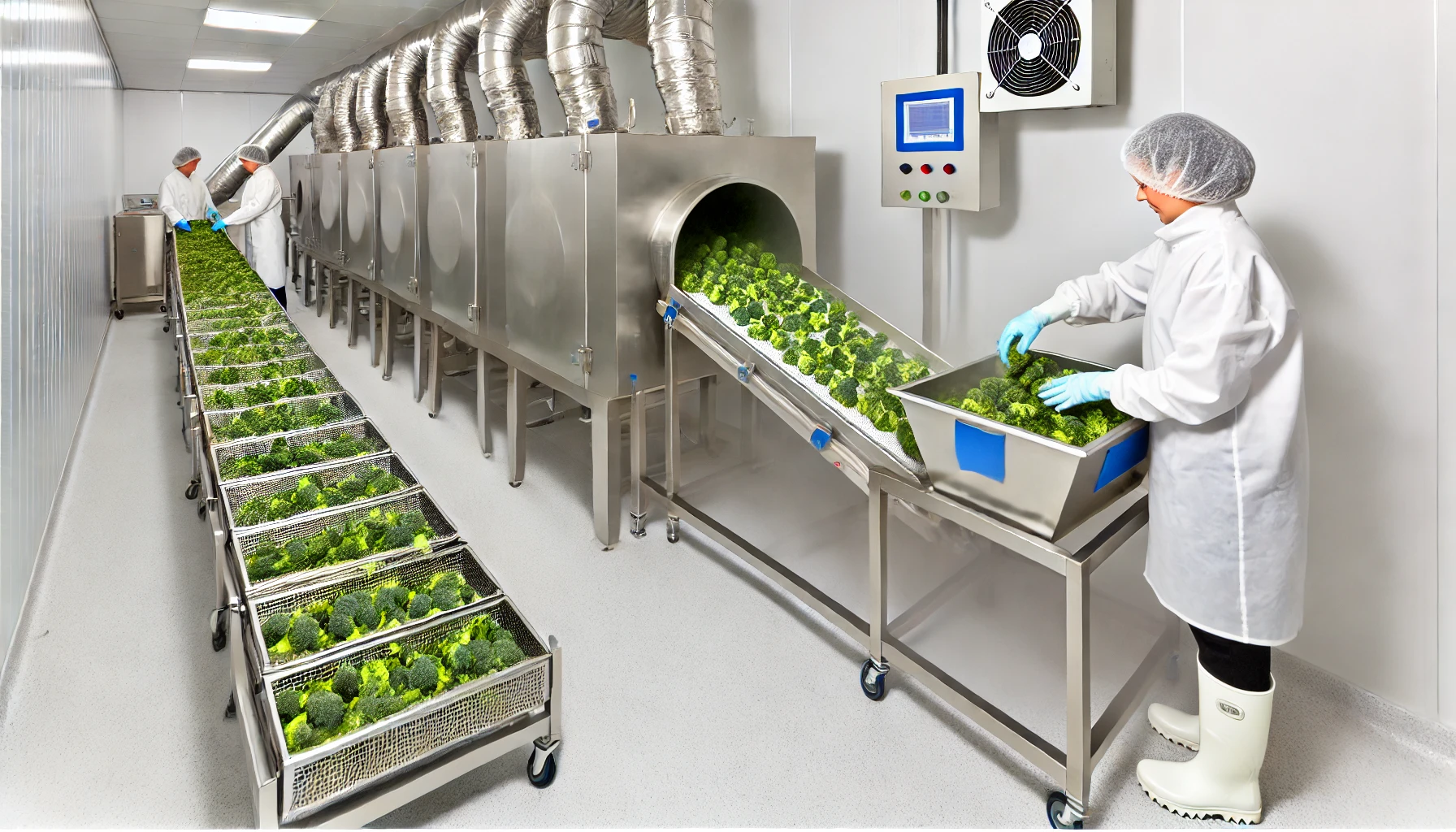

2. How to insulate a freezing tunnel?
When insulating a freezing tunnel, insulation foam is often injected into a double metal wall. First, holes are drilled in the outer metal wall at strategic locations so that the foam can be injected into the space between the walls. Through these holes, the insulation foam, possibly using a special injection hose, is injected under pressure into the cavity.
The foam immediately starts to expand, spreading evenly throughout the space and filling all openings. After a short curing time of a few minutes, the foam forms a dense, firm insulation layer that provides thermal insulation. This process ensures that the inside of the freezing tunnel is optimally protected against heat loss, which is crucial for maintaining low temperatures. Moreover, the foam provides additional protection against condensation and corrosion on the inside of the metal walls.
CASE STUDY: SPRAY
Spraying foam for silo insulation
In the case below, the insulation foam is sprayed against the silo. The silo is then further finished with an outer shell. Besides spraying the foam against the silo, the foam is also very often injected into the double-walled metal structure. In this case, the injection is done in the same way as described above for the freezing tunnel.
1. Importance of silo insulation?
Spray foam insulation is an ideal solution for silo insulation, providing excellent thermal performance that helps maintain the stored materials at optimal temperatures, whether it’s grains, animal feed, or industrial materials. Its airtight and watertight properties prevent moisture infiltration, reducing the risk of spoilage and rust in metal silos. lts ability to be sprayed onto irregular surfaces ensures a seamless application, even in hard-to-reach areas, creating a continuous insulation barrier. Silos are commonly used in agriculture for storing crops, as well as in industrial settings for housing raw materials like chemicals and biomass.
2. How to insulate a silo?
When insulating silos, insulating foam is sprayed directly against the outside of the silo. First, the outer wall of the silo is carefully cleaned and degreased to ensure good adhesion of the foam. The insulation foam is then applied in layers against the metal wall. The foam quickly expands and forms a seamless insulation layer covering the entire surface.
This method provides excellent thermal insulation, minimising temperature fluctuations inside the silo. The foam also provides protection against condensation and helps protect the silo from corrosion. After the insulation foam has fully cured, an outer jacket or protective cladding is fitted over the insulation layer as a finishing touch. This outer jacket provides additional protection against weather and mechanical damage, while it completely seals the insulation and provides a durable and efficient silo insulation solution.
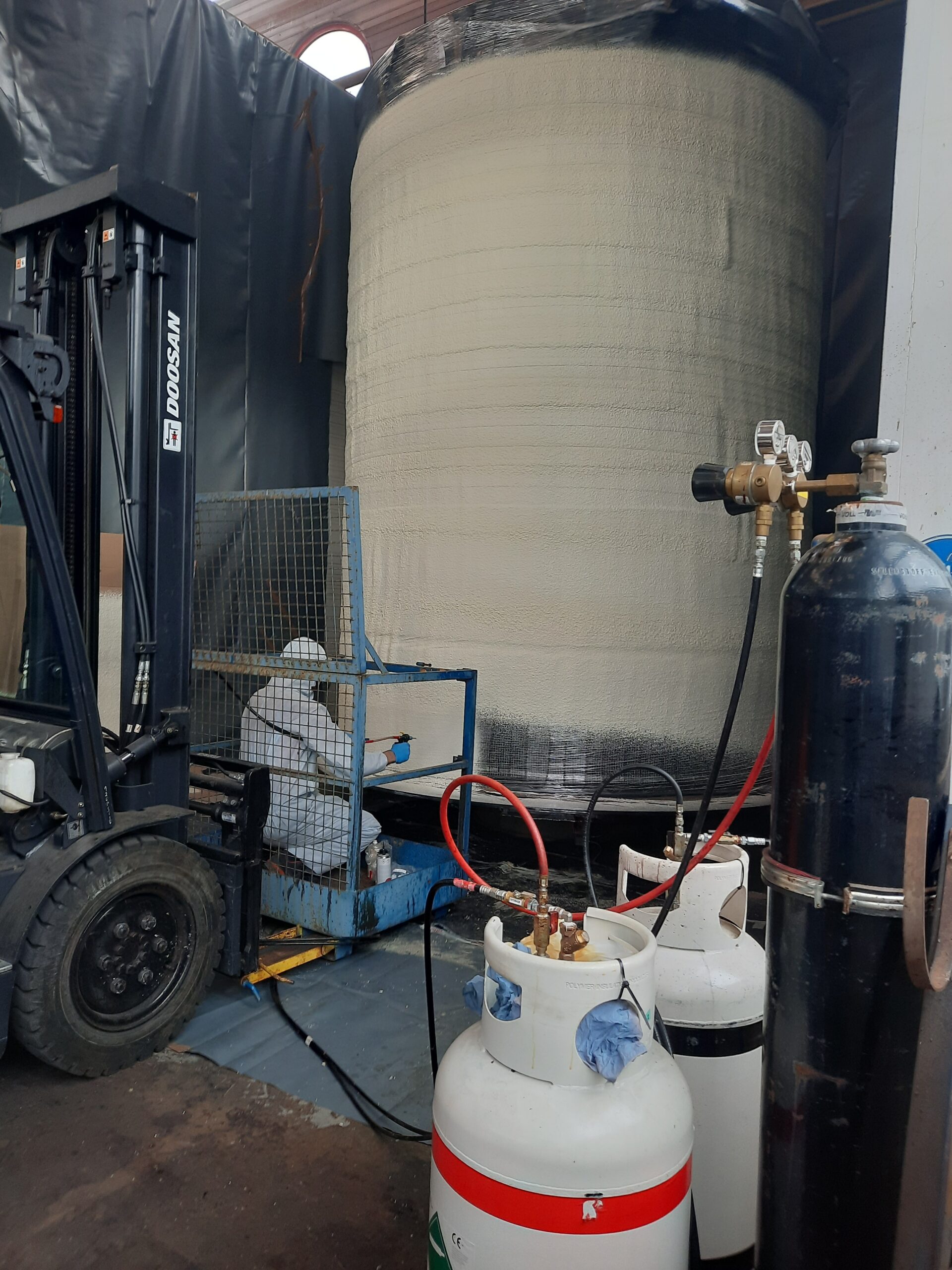

Tailored advice and guidance for your insulation project
At Fomicom, we understand that every project is unique, which is why we offer customised advice to companies to ensure that our insulation foams are applied in the best possible way. Our system is simple and user-friendly, and with the right guidance, anyone can get started with it, regardless of experience. We support you from the first contact to the successful implementation of your project.
Our team of experts is ready to advise you on the right materials and application techniques to ensure you achieve the best results. We guide you step by step, from preparing the surfaces to injecting or spraying the insulation foam. Moreover, we provide clear instructions and technical support, so that your team can carry out the insulation process smoothly. With our insulation kits and tailored guidance, you can start your insulation project quickly and efficiently.
Testing videos







